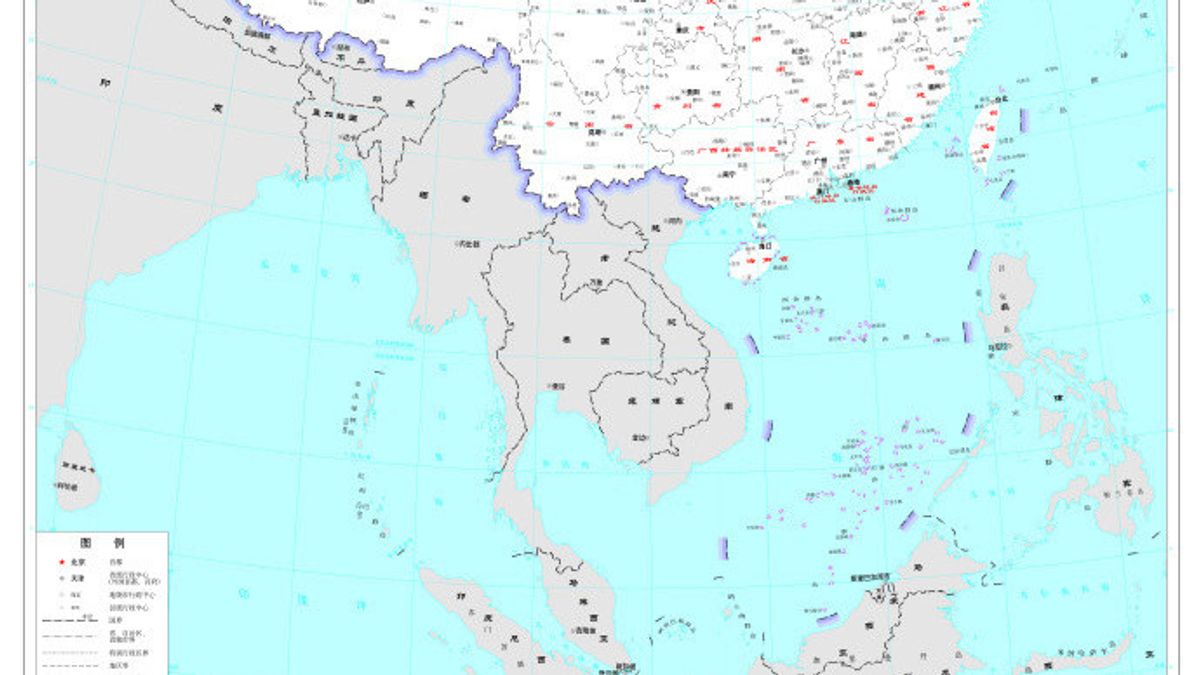JAKARTA - The Philippines, Malaysia, Taiwan, and Vietnam have compactly criticized the map issued by China, showing claims of sovereignty in the South China Sea as unfounded, although Beijing has asked for it to be viewed rationally and objectively.
China on Monday released a well-known U-shaped linemap covering about 90 percent of the South China Sea, which is the source of many disputes in one of the world's most contested waterways, where trade traffic in the region reaches more than $3 trillion every day.
The Philippines on Thursday asked China to "act responsibly and comply with its obligations" under international law, as well as a 2016 arbitration decision stating that the line has no legal basis.
Meanwhile, Malaysia said it had filed a diplomatic protest over the map.
China says the line is based on its historic map. It is not clear whether the latest map shows any new claims to the region.
The U-shaped line in China rotates 1,500 km (932 miles) south of Hainan Island and cuts off the exclusive economic zones (EEZ) of Vietnam, the Philippines, Malaysia, Brunei and Indonesia.
"The latest efforts to legitimize China's sovereignty and jurisdiction over the Philippine maritime area and zone have no basis under international law," the Philippine Foreign Ministry said.
Malaysia in a statement said the new map had no binding authority over Malaysia, which "also views the South China Sea as a complex and sensitive issue".
The map is different from the narrower version submitted by China to the United Nations in 2009, regarding the South China Sea which includes the so-called "nine-dash line".
The latest map has a wider geographic area and has a line with 10 breakup lines that include democratically-ruled Taiwan, similar to the Chinese map in 1948. China also published a map with a 10th break-up line in 2013.
Asked about the latest map, Taiwan's Foreign Ministry spokesman Jeff Liu said Taiwan was "not at all part of the People's Republic of China".
"No matter how the Chinese government distorts its position towards Taiwanese sovereignty, it cannot change the objective facts of the existence of our country," he stressed at a press conference.
When asked why China released the latest maps with 10 lines compared to maps that have nine lines, Chinese Foreign Ministry spokesman Wang Wenbin said Beijing did not hesitate about its territory.
"China's position on the problem of the South China Sea is always clear. Chinese authorities regularly update and release various types of standard maps every year," he explained in a routine briefing.
"We hope that the relevant parties can view this objectively and rationally," Wang Wenbin continued.
SEE ALSO:
Earlier, India on Tuesday said it had filed a strong protest against China over a new map claiming territory of India, which is the latest to disrupt fierce relations between the two Asian giant countries.
On Thursday evening, Vietnam's Ministry of Foreign Affairs said China's claims based on the map were worthless and violated Vietnamese and international law.
"Vietnam firmly rejects any claims in the East Sea by China that are based on a breakup line," Foreign Ministry spokesman Pham Thu Hang said in a statement, referring to the South China Sea.
The English, Chinese, Japanese, Arabic, and French versions are automatically generated by the AI. So there may still be inaccuracies in translating, please always see Indonesian as our main language. (system supported by DigitalSiber.id)















